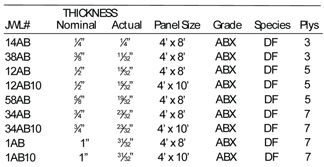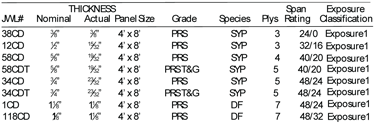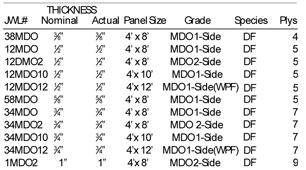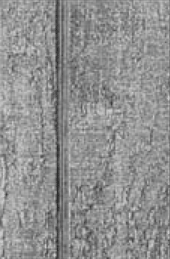
Structural Panels | Guide to Type T1-11 APA Rated Siding | Industrial Panels | Hardwood Panels
|
|
|||||||||||||||||||||||||||||||||||||||||||||||||||||||||||||||||||||||||||||||||||||||||||||||||||||||||||||||||||||||||||||||||||||||||||||||||||||||||||||||||||||||||||||||||||||||||||||||||||||||||||||||||||||||||||||||||||||||||||||||||||||||||||||||||||||||||||||||||||||||||||||||||||||||||||||||||||
|
|
|||||||||||||||||||||||||||||||||||||||||||||||||||||||||||||||||||||||||||||||||||||||||||||||||||||||||||||||||||||||||||||||||||||||||||||||||||||||||||||||||||||||||||||||||||||||||||||||||||||||||||||||||||||||||||||||||||||||||||||||||||||||||||||||||||||||||||||||||||||||||||||||||||||||||||||||||||
|
|
|||||||||||||||||||||||||||||||||||||||||||||||||||||||||||||||||||||||||||||||||||||||||||||||||||||||||||||||||||||||||||||||||||||||||||||||||||||||||||||||||||||||||||||||||||||||||||||||||||||||||||||||||||||||||||||||||||||||||||||||||||||||||||||||||||||||||||||||||||||||||||||||||||||||||||||||||||
 |
||||||||||||||||||||||||||||||||||||||||||||||||||||||||||||||||||||||||||||||||||||||||||||||||||||||||||||||||||||||||||||||||||||||||||||||||||||||||||||||||||||||||||||||||||||||||||||||||||||||||||||||||||||||||||||||||||||||||||||||||||||||||||||||||||||||||||||||||||||||||||||||||||||||||||||||||||||
|
||||||||||||||||||||||||||||||||||||||||||||||||||||||||||||||||||||||||||||||||||||||||||||||||||||||||||||||||||||||||||||||||||||||||||||||||||||||||||||||||||||||||||||||||||||||||||||||||||||||||||||||||||||||||||||||||||||||||||||||||||||||||||||||||||||||||||||||||||||||||||||||||||||||||||||||||||||
 |
||||||||||||||||||||||||||||||||||||||||||||||||||||||||||||||||||||||||||||||||||||||||||||||||||||||||||||||||||||||||||||||||||||||||||||||||||||||||||||||||||||||||||||||||||||||||||||||||||||||||||||||||||||||||||||||||||||||||||||||||||||||||||||||||||||||||||||||||||||||||||||||||||||||||||||||||||||
A-B MARINE (GOOD 2-SIDES)
Specially designed plywood panel made only with Douglas-fir or western larch, and highly restrictive limitations on core gaps and face repair. Ideal for boat hulls and other marine applications where bending is involved. “A” veneer face, a “B” veneer back and “B” grade veneers comprising the core.Exposure Classification: Exterior |
 |
|||||||||||||||||||||||||||||||||||||||||||||||||||||||||||||||||||||||||||||||||||||||||||||||||||||||||||||||||||||||||||||||||||||||||||||||||||||||||||||||||||||||||||||||||||||||||||||||||||||||||||||||||||||||||||||||||||||||||||||||||||||||||||||||||||||||||||||||||||||||||||||||||||||||||||||||||||
A-B EXTERIOR (GOOD 2-SIDES)
For use where appearance of one side is less important but where two solid surfaces are necessary. Smooth surfaces suitable for paint. “A” veneer face, a “B” veneer back and “C” grade veneers comprising the core.Exposure Classification: Exterior |
 |
|||||||||||||||||||||||||||||||||||||||||||||||||||||||||||||||||||||||||||||||||||||||||||||||||||||||||||||||||||||||||||||||||||||||||||||||||||||||||||||||||||||||||||||||||||||||||||||||||||||||||||||||||||||||||||||||||||||||||||||||||||||||||||||||||||||||||||||||||||||||||||||||||||||||||||||||||||
A-C EXTERIOR (GOOD 1-SIDES) For use where appearance of only one side is important in exterior applications. “A” veneer face, a “C” veneer back and “C” grade veneers comprising the core. Exposure Classification: Exterior |
 |
|||||||||||||||||||||||||||||||||||||||||||||||||||||||||||||||||||||||||||||||||||||||||||||||||||||||||||||||||||||||||||||||||||||||||||||||||||||||||||||||||||||||||||||||||||||||||||||||||||||||||||||||||||||||||||||||||||||||||||||||||||||||||||||||||||||||||||||||||||||||||||||||||||||||||||||||||||
C-C EXTERIOR- PLUGGED, TOUCH-SANDED (PTS)
For use where appearance is not important but one relatively smooth face is desired. For use as an underlayment over structural subfloor and other applications where continuous or severe moisture
may be present “C-plugged” veneer face, a “C” veneer back and “C” grade veneers comprising the core.Exposure Classification: Exterior |
 |
|||||||||||||||||||||||||||||||||||||||||||||||||||||||||||||||||||||||||||||||||||||||||||||||||||||||||||||||||||||||||||||||||||||||||||||||||||||||||||||||||||||||||||||||||||||||||||||||||||||||||||||||||||||||||||||||||||||||||||||||||||||||||||||||||||||||||||||||||||||||||||||||||||||||||||||||||||
 |
||||||||||||||||||||||||||||||||||||||||||||||||||||||||||||||||||||||||||||||||||||||||||||||||||||||||||||||||||||||||||||||||||||||||||||||||||||||||||||||||||||||||||||||||||||||||||||||||||||||||||||||||||||||||||||||||||||||||||||||||||||||||||||||||||||||||||||||||||||||||||||||||||||||||||||||||||||
B-B OES PLYFORM
A concrete form panel designed for high reuse. Sanded both sides, mill-oiled and edge sealed. A “Class 1” panel with 7 total plys, Group 1 faces and Group 1 or 2 cross-bands.Exposure Classification: Exterior |
 |
|||||||||||||||||||||||||||||||||||||||||||||||||||||||||||||||||||||||||||||||||||||||||||||||||||||||||||||||||||||||||||||||||||||||||||||||||||||||||||||||||||||||||||||||||||||||||||||||||||||||||||||||||||||||||||||||||||||||||||||||||||||||||||||||||||||||||||||||||||||||||||||||||||||||||||||||||||
| MEDIUM DENSITY OVERLAY (MDO) CONCRETE FORM
A concrete form panel designed for high reuse where a smooth concrete surface is required. Manufactured with a smooth, opaque, resin treated paper overlay on one side and mill-oiled and edge sealed. A “Class 1” panel with 7 total plys, Group 1 face with 56lb/cf paper overlay with 35% resin content, a “B” veneer Group 1 back, and Group 1 or 2 cross-bands. Exposure Classification: Exterior |
 |
|||||||||||||||||||||||||||||||||||||||||||||||||||||||||||||||||||||||||||||||||||||||||||||||||||||||||||||||||||||||||||||||||||||||||||||||||||||||||||||||||||||||||||||||||||||||||||||||||||||||||||||||||||||||||||||||||||||||||||||||||||||||||||||||||||||||||||||||||||||||||||||||||||||||||||||||||||
| HIGH DENSITY OVERLAY (HDO) CONCRETE FORM
A concrete form panel designed for high reuse where an ultra-smooth concrete surface is required.
Manufactured with an extremely hard, semi-opaque, resin treated paper overlay on both faces and milloiled
and edge sealed. A “Class 1” panel with 7 total plys, Group 1 face with 100lb/cf paper face overlay, Group 1 back with 30lb/cf paper overlay and Group 1 or 2 cross-bands.Exposure Classification: Exterior. |
 |
|||||||||||||||||||||||||||||||||||||||||||||||||||||||||||||||||||||||||||||||||||||||||||||||||||||||||||||||||||||||||||||||||||||||||||||||||||||||||||||||||||||||||||||||||||||||||||||||||||||||||||||||||||||||||||||||||||||||||||||||||||||||||||||||||||||||||||||||||||||||||||||||||||||||||||||||||||
PERFORMANCE RATED SHEATHING (PRS)- PLYWOOD
Veneer panels specially designed for subflooring and wall and roof sheathing. Also good for a broad range of other construction and industrial applications. Typically PRS panels have unsanded Faces and are constructed with exterior glue. |
 |
|||||||||||||||||||||||||||||||||||||||||||||||||||||||||||||||||||||||||||||||||||||||||||||||||||||||||||||||||||||||||||||||||||||||||||||||||||||||||||||||||||||||||||||||||||||||||||||||||||||||||||||||||||||||||||||||||||||||||||||||||||||||||||||||||||||||||||||||||||||||||||||||||||||||||||||||||||
| PERFORMANCE RATED SHEATHING (PRS)- ORIENTED STRAND BOARD (OSB)
Non-veneer panels designed specifically for subflooring and wall and roof sheathing. Also good for a broad range of other construction and industrial applications. OSB is composed of compressed strands arranged in layers oriented at right angles to one another, The orientation of layers achieve the same advantages
of cross-laminated veneers in plywood. Since wood is stronger along the grain, the cross-lamination distributes wood's natural strength in both directions of the panel. Typically OSB panels are textured on one side to reduce slickness and are constructed with exterior glues and resins. |
 |
|||||||||||||||||||||||||||||||||||||||||||||||||||||||||||||||||||||||||||||||||||||||||||||||||||||||||||||||||||||||||||||||||||||||||||||||||||||||||||||||||||||||||||||||||||||||||||||||||||||||||||||||||||||||||||||||||||||||||||||||||||||||||||||||||||||||||||||||||||||||||||||||||||||||||||||||||||
| STRUCTURAL 1- PLYWOOD
A Performance Rated Sheathing panel grade for use where shear and crosspanel strength properties are of maximum importance, such as panelized roofs and diaphragms. Typically Str- 1 PRS panels have unsanded Faces and are constructed with exterior glue. |
 |
|||||||||||||||||||||||||||||||||||||||||||||||||||||||||||||||||||||||||||||||||||||||||||||||||||||||||||||||||||||||||||||||||||||||||||||||||||||||||||||||||||||||||||||||||||||||||||||||||||||||||||||||||||||||||||||||||||||||||||||||||||||||||||||||||||||||||||||||||||||||||||||||||||||||||||||||||||
|
STRUCTURAL 1- ORIENTED STRAND BOARD (OSB)
A Performance Rated Sheathing panel grade for use where shear and crosspanel strength properties are of maximum importance, such as panelized roofs and diaphragms. Typically OSB Str-1 panels are textured on one side to reduce slickness and are constructed with exterior glues and resins. |
 |
|||||||||||||||||||||||||||||||||||||||||||||||||||||||||||||||||||||||||||||||||||||||||||||||||||||||||||||||||||||||||||||||||||||||||||||||||||||||||||||||||||||||||||||||||||||||||||||||||||||||||||||||||||||||||||||||||||||||||||||||||||||||||||||||||||||||||||||||||||||||||||||||||||||||||||||||||||
UNDERLAYMENT / STURDI-IFLOOR(SIF)- PLYWOOD
A veneer panel designed specifically for use over structural subfloor. Provides smooth, sanded surface for application of carpet and resilient flooring and possesses high concentrated impact load resistance.
Exposure Classification: Exposure 1. |
 |
|||||||||||||||||||||||||||||||||||||||||||||||||||||||||||||||||||||||||||||||||||||||||||||||||||||||||||||||||||||||||||||||||||||||||||||||||||||||||||||||||||||||||||||||||||||||||||||||||||||||||||||||||||||||||||||||||||||||||||||||||||||||||||||||||||||||||||||||||||||||||||||||||||||||||||||||||||
| UNDERLAYMENT / STURDI-I-FLOOR (SIF)- ORIENTED STRAND BOARD (OSB)
A non-veneer panel designed specifically for use over structural subfloor. Provides smooth, sanded surface for application of carpet and resilient flooring and possesses high concentrated impact load resistance.Exposure Classification: Exposure 1. |
 |
|||||||||||||||||||||||||||||||||||||||||||||||||||||||||||||||||||||||||||||||||||||||||||||||||||||||||||||||||||||||||||||||||||||||||||||||||||||||||||||||||||||||||||||||||||||||||||||||||||||||||||||||||||||||||||||||||||||||||||||||||||||||||||||||||||||||||||||||||||||||||||||||||||||||||||||||||||
ROUGH SHOP
A plywood downfall product which does not make the intended grade. Panels can contain lamination and veneer
defects, as well as size and thickness inconsistencies. |
|
|||||||||||||||||||||||||||||||||||||||||||||||||||||||||||||||||||||||||||||||||||||||||||||||||||||||||||||||||||||||||||||||||||||||||||||||||||||||||||||||||||||||||||||||||||||||||||||||||||||||||||||||||||||||||||||||||||||||||||||||||||||||||||||||||||||||||||||||||||||||||||||||||||||||||||||||||||
| TEXTURED 1-11 SIDING (APA 303 PATTERN)
Structural siding panels with known and reliable strength and stiffness properties, allowing it to be used as an integral element of shear walls in commercial, residential and industrial structures. The most common grades are "Decorative" with 18-patches on the face and "Premium" with up to 6-patches. An ultra-premium panel is our "Breckenridge" siding, which has a clear, no patch, whole piece face (WPF) with an imported "redwood" like face veneer. All panels are available with or without grooves and have a slight, rough-sawn texture. |
 |
|||||||||||||||||||||||||||||||||||||||||||||||||||||||||||||||||||||||||||||||||||||||||||||||||||||||||||||||||||||||||||||||||||||||||||||||||||||||||||||||||||||||||||||||||||||||||||||||||||||||||||||||||||||||||||||||||||||||||||||||||||||||||||||||||||||||||||||||||||||||||||||||||||||||||||||||||||
|
||||||||||||||||||||||||||||||||||||||||||||||||||||||||||||||||||||||||||||||||||||||||||||||||||||||||||||||||||||||||||||||||||||||||||||||||||||||||||||||||||||||||||||||||||||||||||||||||||||||||||||||||||||||||||||||||||||||||||||||||||||||||||||||||||||||||||||||||||||||||||||||||||||||||||||||||||||
| MEDIUM DENSITY OVERLAY (MDO) SIGN PANEL
A smooth, opaque, resin-fiber overlay on one or both faces. Face veneer(s) are sanded before a 56lb/cf paper overlay with 28% resin is applied to the face(s) which minimizes wood grain show-through after painting. All MDO panels are continuous in construction and do not have scarf joints even on the 12' panels. |
 |
|||||||||||||||||||||||||||||||||||||||||||||||||||||||||||||||||||||||||||||||||||||||||||||||||||||||||||||||||||||||||||||||||||||||||||||||||||||||||||||||||||||||||||||||||||||||||||||||||||||||||||||||||||||||||||||||||||||||||||||||||||||||||||||||||||||||||||||||||||||||||||||||||||||||||||||||||||
TUF-TRED SKIDGUARD
A highly textured, polyglass overlaid panel for superior skid resistance. This panel is designed for exterior ramps, walkways, decks, docks and other areas where good traction is essential. Tuf-Tred SkidGuard has smooth HDO backing and comes ready to use with no further finishing required. Tan in color on SkidGuard
face. |
 |
|||||||||||||||||||||||||||||||||||||||||||||||||||||||||||||||||||||||||||||||||||||||||||||||||||||||||||||||||||||||||||||||||||||||||||||||||||||||||||||||||||||||||||||||||||||||||||||||||||||||||||||||||||||||||||||||||||||||||||||||||||||||||||||||||||||||||||||||||||||||||||||||||||||||||||||||||||
PARTICLEBOARD UNDERLAYMENT GRADE
A light-colored composite board manufactured primarily from Pine and Douglas Fir wood particles. The wood particles are blended with resin and wax and pressed into panels. Underlayment grade has an approximated
density of 42lb/cf and is ideal for use under all types of floor coverings and industrial applications.
Exposure Classification: Interior |
 |
|||||||||||||||||||||||||||||||||||||||||||||||||||||||||||||||||||||||||||||||||||||||||||||||||||||||||||||||||||||||||||||||||||||||||||||||||||||||||||||||||||||||||||||||||||||||||||||||||||||||||||||||||||||||||||||||||||||||||||||||||||||||||||||||||||||||||||||||||||||||||||||||||||||||||||||||||||
MEDIUM DENSITY FIBERPINE (MDF)
MDF is a light-colored, easily machined panel, produced primarily with Ponderosa and Sugar Pine wood chips. The wood chips are pressure cooked and broken down into fibers and combined with resin and wax and pressed into panels. Because MDF uses wood fibers, the end product is solid and the compressed fibers make it very dense. A flat solid surface offers exceptional ability to accept laminates, hardwood veneer and other high quality finishes. A smooth uniform density of 48lb/cf is excellent for precise routing and cutting.Exposure Classification: Interior |
 |
|||||||||||||||||||||||||||||||||||||||||||||||||||||||||||||||||||||||||||||||||||||||||||||||||||||||||||||||||||||||||||||||||||||||||||||||||||||||||||||||||||||||||||||||||||||||||||||||||||||||||||||||||||||||||||||||||||||||||||||||||||||||||||||||||||||||||||||||||||||||||||||||||||||||||||||||||||
LAUAN (MERANTI)
A hardwood imported from the Philippines or Malaysia which is light reddish brown to dark reddish-brown in
color. This panel is often used in paint grade applications where a consistent veneer color is not necessary. This hardwood panel is considerably less expensive than most hardwood plywood and is a perfect in most industrial applications. |
 |
|||||||||||||||||||||||||||||||||||||||||||||||||||||||||||||||||||||||||||||||||||||||||||||||||||||||||||||||||||||||||||||||||||||||||||||||||||||||||||||||||||||||||||||||||||||||||||||||||||||||||||||||||||||||||||||||||||||||||||||||||||||||||||||||||||||||||||||||||||||||||||||||||||||||||||||||||||
HARDBOARD
Panels manufactured primarily from interfelted lignocellulosic fibers which are consolidated under heat and
pressure in a hot-press to a density of 31lb/cf or greater. Other materials may be added to improve certain
properties, such as stiffness, hardness, finishing properties, resistance to abrasion and moisture.
Tempered Hardboard Standard Hardboard |
 |
|||||||||||||||||||||||||||||||||||||||||||||||||||||||||||||||||||||||||||||||||||||||||||||||||||||||||||||||||||||||||||||||||||||||||||||||||||||||||||||||||||||||||||||||||||||||||||||||||||||||||||||||||||||||||||||||||||||||||||||||||||||||||||||||||||||||||||||||||||||||||||||||||||||||||||||||||||
PEGBOARD
Our pegboard panels are Tempered Hardboard panels
that have been punched with holes after trimming. |
 |
|||||||||||||||||||||||||||||||||||||||||||||||||||||||||||||||||||||||||||||||||||||||||||||||||||||||||||||||||||||||||||||||||||||||||||||||||||||||||||||||||||||||||||||||||||||||||||||||||||||||||||||||||||||||||||||||||||||||||||||||||||||||||||||||||||||||||||||||||||||||||||||||||||||||||||||||||||
MELAMINE
The particleboard core is thermally fused with a melamine-saturated paper. The panel can have melamine
paper on one or two side and/or have a glueable overlay on the back. The melamine finished face(s) are and this durable and color-fast finish resists warping, bowing, scratching and staining. Melamine is a natural choice for cabinets, furniture, fixtures and other finish applications. |
||||||||||||||||||||||||||||||||||||||||||||||||||||||||||||||||||||||||||||||||||||||||||||||||||||||||||||||||||||||||||||||||||||||||||||||||||||||||||||||||||||||||||||||||||||||||||||||||||||||||||||||||||||||||||||||||||||||||||||||||||||||||||||||||||||||||||||||||||||||||||||||||||||||||||||||||||||
|
|
|||||||||||||||||||||||||||||||||||||||||||||||||||||||||||||||||||||||||||||||||||||||||||||||||||||||||||||||||||||||||||||||||||||||||||||||||||||||||||||||||||||||||||||||||||||||||||||||||||||||||||||||||||||||||||||||||||||||||||||||||||||||||||||||||||||||||||||||||||||||||||||||||||||||||||||||||||
|
|
||||||||||||||||||||||||||||||||||||||||||||||||||||||||||||||||||||||||||||||||||||||||||||||||||||||||||||||||||||||||||||||||||||||||||||||||||||||||||||||||||||||||||||||||||||||||||||||||||||||||||||||||||||||||||||||||||||||||||||||||||||||||||||||||||||||||||||||||||||||||||||||||||||||||||||||||||||










